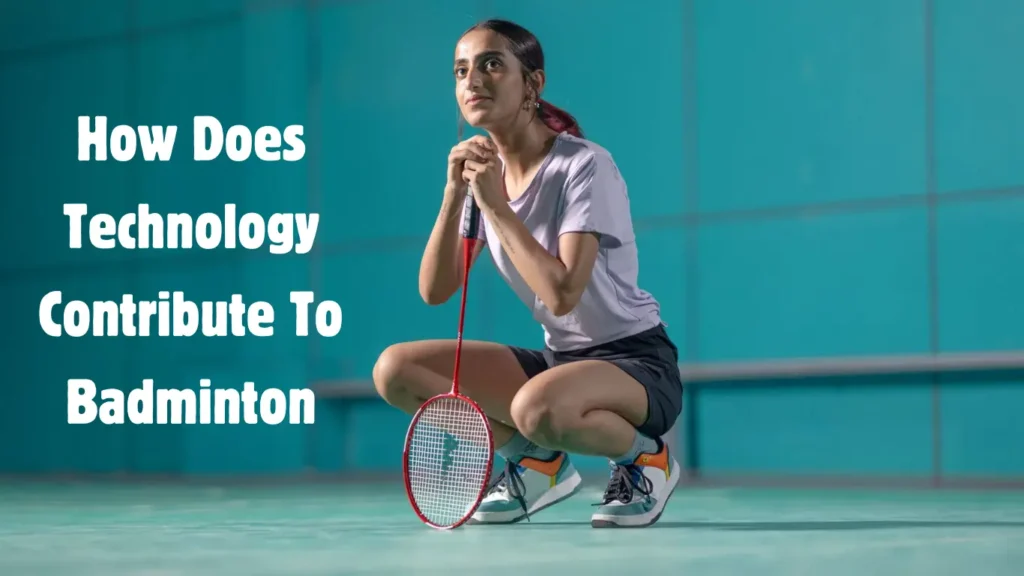Technology has revolutionized badminton, transforming it from a traditional sport into a game driven by innovation, precision, and enhanced player experience. From advanced racket designs to AI-driven training systems, technology plays a pivotal role in shaping modern badminton.
Whether you’re a professional athlete or an enthusiastic player, understanding how technology impacts this sport helps in refining skills and maximizing performance.
Innovations in Badminton Equipment
Smart Rackets and Shuttlecocks
Modern badminton rackets now incorporate cutting-edge materials such as carbon fiber and nanotechnology to enhance durability, flexibility, and power.
Some high-end rackets even have built-in sensors that track shot power, swing speed, and angle to provide real-time feedback, helping players refine their techniques effectively.
Smart shuttlecocks, embedded with microchips, analyze flight patterns and speed, offering data-driven insights to players and coaches.
The advancement of racket string technology has also played a crucial role in performance enhancement. New-generation strings are designed to offer better control, repulsion power, and durability. This allows players to generate more accurate shots with improved tension control.
Court and Flooring Advancements
The evolution of badminton courts has significantly improved player safety and performance. High-quality synthetic mats reduce impact on joints, while intelligent court lighting enhances visibility, minimizing strain on the eyes. Sensor-equipped courts also track movement, ensuring accurate footwork analysis and injury prevention.
The development of anti-slip surfaces and shock-absorbent flooring has helped reduce injuries, especially for professional players who spend hours training and competing. These innovations have contributed to the overall longevity of a player’s career by minimizing wear and tear on their bodies.
AI and Data Analytics in Training
Motion Tracking and Performance Analysis
AI-powered motion tracking systems enable players to analyze their movements in detail. These systems capture every shot, footstep, and jump, providing insights into efficiency and areas for improvement. Professional players use these analytics to tweak their gameplay, optimize energy usage, and master strategic shot placements.
Coaches and players now rely on slow-motion video analysis to break down techniques, allowing for an in-depth understanding of shot mechanics. This method provides an edge in competition, helping players adjust their strokes, footwork, and reactions.
Virtual Coaching and Simulation
Virtual reality (VR) and augmented reality (AR) have introduced immersive training experiences. Players can practice against virtual opponents, simulating real match scenarios. AI-driven coaching systems assess player performance and suggest personalized training drills based on strengths and weaknesses.
Simulated gameplay using AI opponents helps players improve reflexes, shot selection, and decision-making under pressure. Some training programs allow athletes to analyze past matches and predict an opponent’s strategies based on historical performance data.
Wearable Technology for Performance Monitoring
Wearable devices such as smartwatches and fitness bands help players track key metrics like heart rate, stamina, and calorie expenditure. These wearables enable athletes to optimize training schedules, prevent overexertion, and enhance endurance levels.
More advanced wearable devices come with biomechanical sensors that provide data on muscle exertion, fatigue levels, and posture correction. This helps players train smarter by identifying areas of stress on their bodies and adjusting their routines accordingly.
Badminton Officiating and Fair Play Enhancements
Hawk-Eye Technology for Line Calls
To ensure accuracy in officiating, Hawk-Eye technology is now widely used in badminton. This system tracks the shuttlecock’s trajectory and provides instant replays for line calls, reducing human errors and maintaining fairness in matches.
With multiple high-speed cameras positioned around the court, Hawk-Eye creates a 3D representation of the shuttle’s path, allowing referees to make accurate decisions even in high-stakes matches.
Electronic Scoring and AI-Based Refereeing
Automated scoring systems and AI-driven refereeing have enhanced the transparency of badminton tournaments. These technologies minimize disputes, ensure precise scorekeeping, and maintain the integrity of the game.
Some tournaments have even introduced AI-powered umpiring systems that analyze in-game situations, ensuring unbiased decision-making. This reduces human error and provides a more consistent playing field for all competitors.
The Role of Sports Science in Badminton
Physiological and Psychological Training
Sports science has become an integral part of badminton training. Players undergo biomechanical analysis to enhance movement efficiency and prevent injuries.
Psychological conditioning, such as mindfulness training and cognitive exercises, helps players develop mental resilience during high-pressure matches.
Nutritional Optimization for Performance
Dietary advancements and personalized nutrition plans ensure players have the right balance of macronutrients and hydration strategies. This plays a crucial role in endurance, recovery, and overall performance on the court.
The Future of Badminton Technology
As technology continues to evolve, badminton is set to become even more data-driven and accessible. Future advancements may include AI-powered opponent analysis, real-time biometric feedback, and robotic training partners.
The integration of machine learning and deep learning in badminton coaching will further refine strategies, making training more efficient and customized for individual players.
With the rapid growth of technology in sports, we may see innovations such as smart courts capable of automatically adjusting playing conditions, such as temperature and humidity, to optimize performance.
Final Thoughts
Technology has redefined how badminton is played, trained, and officiated. Whether through smart equipment, AI-driven coaching, or performance-enhancing wearables, technological innovations provide players with a competitive edge.
As the sport continues to embrace advancements, both professionals and enthusiasts can leverage these tools to elevate their game. The future of badminton is not just about agility and skill—it’s about merging human potential with technology for peak performance.
With the right blend of traditional training and modern technological support, badminton players can push the boundaries of the sport and achieve unprecedented levels of excellence.


